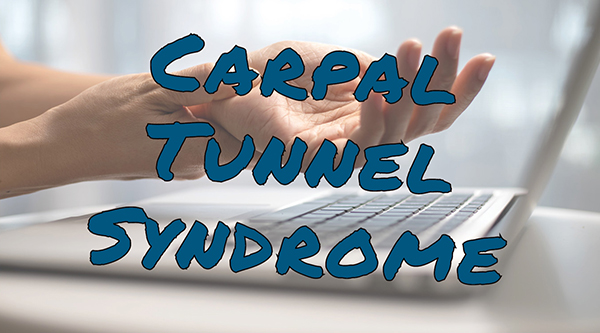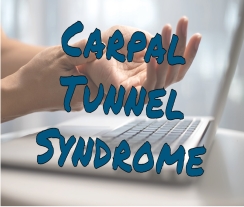
WHEN A "TWEAK" WON'T GO AWAY
What is Carpal Tunnel Syndrome?
The word “carpal” means of or relating to the carpus, which is the wrist joint. There is a narrow opening inside the wrist, a tunnel, that a nerve runs through. That nerve is called the median nerve, and anything that squeezes or irritates the median nerve can cause changes to sensations in the palm, thumb, and all fingers except the little finger. The resulting pain, numbness, and tingling from irritation of the median nerve is called carpal tunnel syndrome, or CTS.
Carpal Tunnel Syndrome Causes
CTS is frequently associated with repetitive motions of the hand resulting from activities like:
- playing musical instruments
- constant grabbing and releasing
- typing and using a mouse
- assembly line work
However, other less obvious conditions can also cause CTS including:
- degenerative diseases (e.g., arthritis)
- nerve-damaging illnesses (e.g., diabetes)
- fluid retention and thyroid disorders
What can I do?
There are several things you can do to help relieve CTS without surgery.
- Be gentle. Relax your grip, type more gently, use a pen with a soft grip and bigger barrel.
- Walk away. Take short, frequent breaks from activities that irritate your wrists, and gently move and stretch your wrists during those breaks.
- Mind your mouse. Find a computer mouse that has low-resistance buttons and fits the shape of your hand. A mouse should fit the “cup” of your palm without any change to the shape of your relaxed hand, and your wrist should lie flat on the desk surface as your hand rests on the mouse.
- Heat it up. Cold temperatures can make CTS worse. Use fingerless gloves to work, apply heat packs to the hands, and wear gloves when the weather starts to get cooler.
- Cool it down. Inflammation often responds to an ice wrap. If cold external temperatures aren’t making symptoms worse, try icing the wrist for about 10-15 minutes to lessen the pain.
Nothing seems to be helping…
If you’ve tried conservative measures to treat CTS, but your symptoms simply aren’t going away, a professional evaluation of your wrist and hand is a necessary next step. An Orthopedic + Fracture Specialists who specializes in conditions of the hand and wrist will be able to provide you with an accurate diagnosis and a customized treatment plan to help you Put Your Life in Motion!


